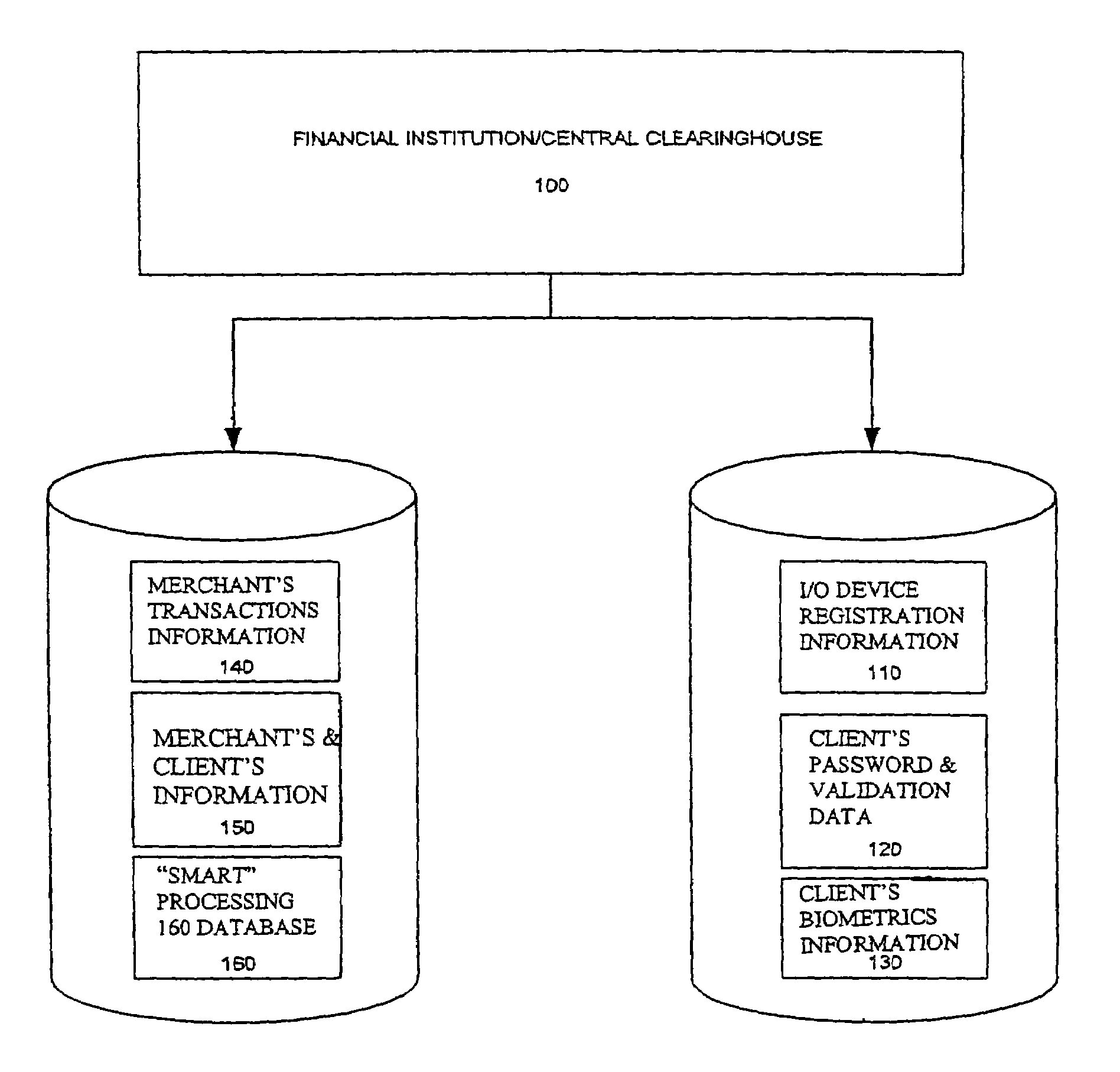System and method for safe financial transactions in E.Commerce
a financial transaction and system technology, applied in the field of e-commerce transactions, can solve the problems of affecting the growth of electronic commerce, affecting the stability of electronic commerce, and affecting the stability of electronic commerce, and achieve the effects of convenient use of additional purchasing power on the internet, fast, safe and effective way to maintain/update e-commerce accounts, and small siz
- Summary
- Abstract
- Description
- Claims
- Application Information
AI Technical Summary
Benefits of technology
Problems solved by technology
Method used
Image
Examples
Embodiment Construction
[0031]A representative hardware environment is depicted herein. The entire system is made up of a financial institution / central clearinghouse 100, client 200 and merchant 300 as depicted in FIG. 1. The financial institution / central clearinghouse acts as a liaison between the client and the merchant. Currently, most banking institutions employ the use of some sort of central clearinghouse that is used to facilitate transactions between banks. Therefore, this additional functionality could be incorporated into the existing framework of the present banking community with minimal disruption.
[0032]FIG. 2 is the layout of the financial institution / central clearinghouse 100. The key role of the financial institution / central clearinghouse is to secure verification & processing of information received from the client to the merchant. It also facilitates the transfer of funds from the client(s) to the merchant(s) bank account. All the information / data is stored in two databases. One database ...
PUM
 Login to View More
Login to View More Abstract
Description
Claims
Application Information
 Login to View More
Login to View More - R&D
- Intellectual Property
- Life Sciences
- Materials
- Tech Scout
- Unparalleled Data Quality
- Higher Quality Content
- 60% Fewer Hallucinations
Browse by: Latest US Patents, China's latest patents, Technical Efficacy Thesaurus, Application Domain, Technology Topic, Popular Technical Reports.
© 2025 PatSnap. All rights reserved.Legal|Privacy policy|Modern Slavery Act Transparency Statement|Sitemap|About US| Contact US: help@patsnap.com



